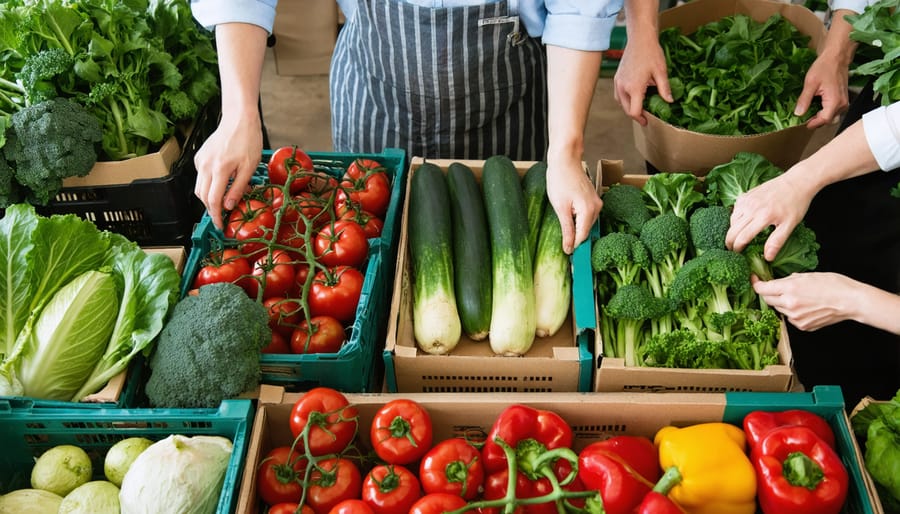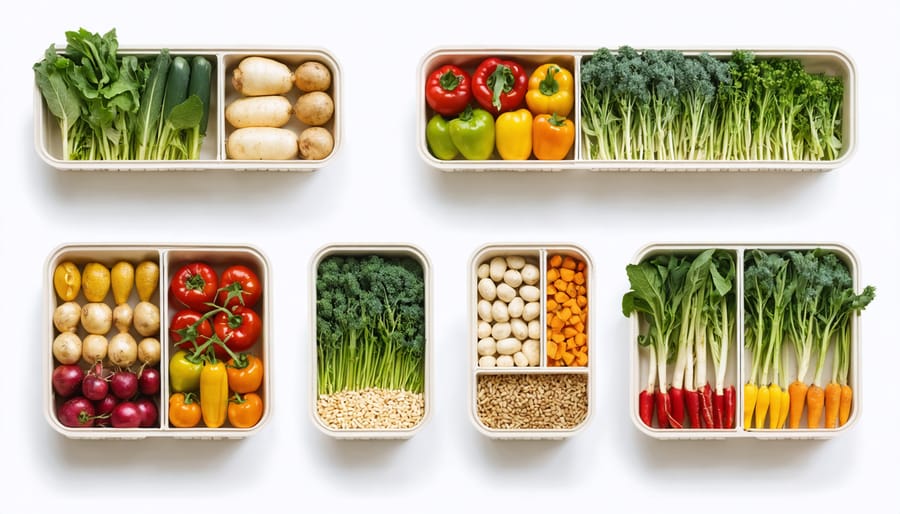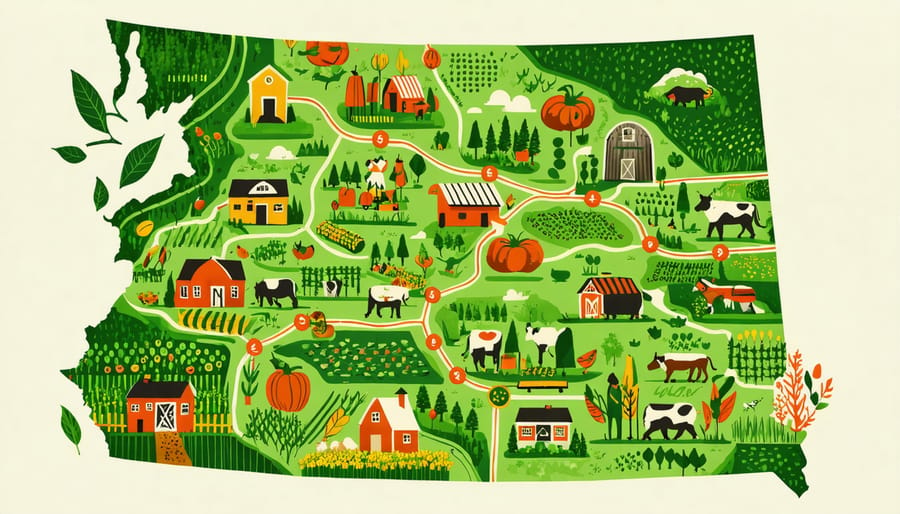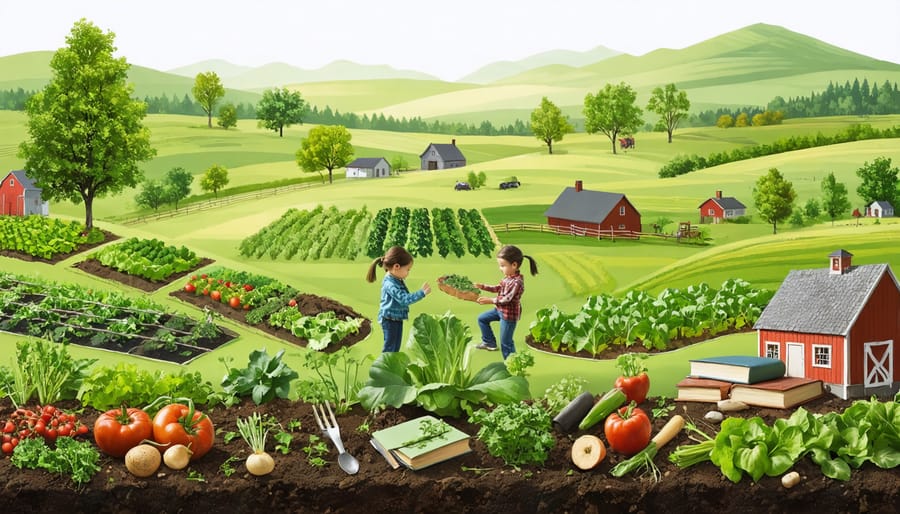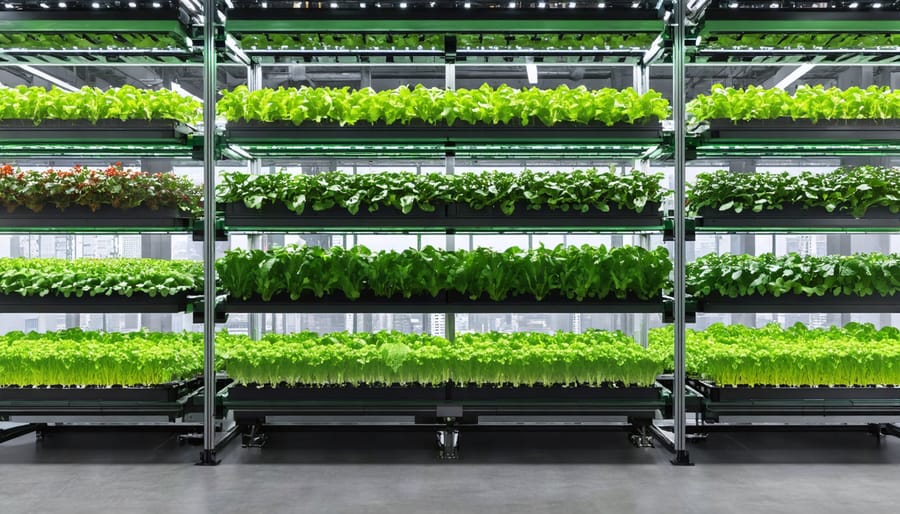Transform your restaurant’s menu into a dynamic seasonal showcase by partnering directly with local farmers for first access to peak-harvest ingredients. This strategic alignment with the growing farm-to-table movement not only ensures premium ingredient quality but also reduces food costs by up to 30% through seasonal purchasing.
Seasonal menus represent more than just a culinary trend – they’re a powerful business strategy that combines environmental stewardship with increased profitability. By adapting your offerings to nature’s rhythm, restaurants can reduce food waste, strengthen local agricultural partnerships, and create compelling dining experiences that resonate with today’s environmentally conscious consumers.
From Alberta’s summer berries to fall root vegetables, each season presents unique opportunities to showcase regional flavors while supporting local producers. Leading restaurants across Canada are discovering that seasonal menu adaptation drives both customer loyalty and operational efficiency, with many reporting 20-25% higher profit margins on seasonal dishes compared to year-round standards.
The Farm-to-Table Connection in Alberta

Building Strong Farmer-Restaurant Partnerships
The success of seasonal menus often hinges on strong partnerships between restaurants and local farmers. In Alberta, these collaborations have created thriving local food communities that benefit both parties. Take the example of Red Deer’s Prairie Farm Fresh, which partners with five local restaurants to provide year-round seasonal produce through greenhouse cultivation and traditional farming methods.
Chef Maria Torres of Calgary’s Harvest Table works directly with three family farms within 100 kilometres of her restaurant. She visits each farm monthly to plan menus around upcoming harvests, resulting in a 30% reduction in food costs and virtually zero waste. The farmers benefit from guaranteed purchase agreements and premium pricing for their specialty crops.
In Edmonton, the Root to Table initiative connects 12 restaurants with a network of 15 local farms. Through their shared online planning platform, farmers post their projected harvests, allowing chefs to design seasonal menus months in advance. This system has helped participating farms increase their revenue by an average of 40% while restaurants report higher customer satisfaction and loyalty.
Economic Benefits for Local Producers
Local producers partnering with restaurants that feature seasonal menus can experience significant financial advantages. Based on data from Alberta’s farm-to-table initiatives, farmers who establish direct relationships with restaurants typically see a 25-40% increase in their profit margins compared to traditional distribution channels.
These partnerships create predictable revenue streams through advanced ordering systems, allowing farmers to plan their crop rotations and livestock management more effectively. For example, Calgary-based farmer Sarah Thompson reports that her farm’s revenue increased by 30% after partnering with three local restaurants that commit to seasonal purchasing agreements.
The elimination of middlemen in the supply chain means producers can command better prices for their products while still offering restaurants competitive rates. This direct-to-restaurant model also reduces storage and transportation costs, as produce can be delivered at peak freshness within hours of harvest.
Many Alberta farmers have found that restaurant partnerships lead to diversification opportunities, as chefs often request specialty items or heritage varieties that command premium prices. This creates a viable market for unique, high-value crops that might not be practical in conventional wholesale arrangements.

Planning Your Seasonal Menu Calendar
Spring/Summer Menu Planning
Spring and summer menu planning in Alberta offers exciting opportunities to showcase the region’s abundant seasonal produce. Early spring brings tender greens, asparagus, and rhubarb, while late spring introduces root vegetables and fresh herbs from local greenhouses. Working closely with local farmers helps restaurants anticipate crop availability and plan menus accordingly.
For early spring menus, focus on incorporating greenhouse-grown microgreens, sprouts, and early season vegetables. Consider featuring dishes that highlight wild-foraged ingredients like fiddleheads and morel mushrooms, which are particularly abundant in Alberta’s woodlands during this time.
As summer progresses, the options expand dramatically. Late June through August brings an abundance of field tomatoes, sweet corn, zucchini, and fresh berries. This is the perfect time to create vibrant salads, cold soups, and grilled vegetable dishes that showcase the peak freshness of local produce.
To maintain menu flexibility, consider implementing a rotating specials board that can adapt to unexpected crop availability or surplus harvests. This approach not only supports local farmers but also helps reduce food waste and maintain competitive pricing.
Remember to plan preservation methods for peak-season ingredients. Pickling, fermenting, and preserving summer produce can extend their use into shoulder seasons and create unique flavor profiles for future menu items. This traditional preservation approach resonates well with guests interested in authentic farm-to-table dining experiences.
Fall/Winter Menu Strategies
As winter approaches, successful restaurants in Alberta are adapting their menus to embrace the abundance of storage crops and innovative greenhouse solutions. Root vegetables like carrots, potatoes, and parsnips from local farms become menu staples, offering hearty options that celebrate regional agriculture. Many establishments partner with greenhouse operations to maintain year-round local produce availability, ensuring fresh greens and herbs even during the coldest months.
Smart storage techniques are essential for maximizing crop longevity. Root cellars and temperature-controlled storage facilities help preserve fall harvests well into winter, while proper humidity control extends the shelf life of squash, onions, and other storage-friendly vegetables. Many chefs are reviving traditional preservation methods like fermentation and pickling to add variety to winter offerings.
Greenhouse partnerships have become increasingly vital, with many restaurants developing direct relationships with indoor growing operations. These collaborations ensure consistent access to fresh herbs, microgreens, and select vegetables throughout the winter season. Some innovative establishments are even installing their own small-scale indoor growing systems, creating kitchen gardens that provide fresh garnishes and specialty items year-round.
Consider incorporating seasonal comfort dishes that showcase preserved summer bounty alongside storage crops and greenhouse-grown ingredients. This approach not only supports local agriculture but also creates memorable dining experiences that reflect Alberta’s agricultural heritage and innovation.
Reducing Food Waste Through Seasonal Planning
Cross-Utilization Techniques
Cross-utilization of seasonal ingredients is a smart strategy that Alberta restaurateurs and farmers have embraced to maximize efficiency and reduce waste. By identifying versatile ingredients that can serve multiple purposes across your menu, you’ll optimize inventory and maintain cost-effectiveness throughout the season.
Root vegetables like locally grown carrots and parsnips can transform from elegant purees for main dishes to hearty soup bases. Fresh herbs from regional greenhouses can double as garnishes and key flavoring components in multiple dishes. Consider how Manitoba-sourced wild mushrooms might work in both appetizers and main course proteins, or how locally produced honey can enhance both savory dishes and desserts.
Smart cross-utilization also means thinking creatively about typically discarded parts. Beet greens become salad components, while the roots serve as both side dishes and natural food coloring. Carrot tops make excellent pestos, while potato peels can become crispy garnishes. This approach not only reduces food waste but also helps maintain consistent food costs while supporting local agricultural partners.
Remember to train your kitchen staff on these multiple applications to ensure successful implementation across your menu items.
Storage and Preservation Methods
Modern storage and preservation methods blend seamlessly with traditional techniques in Alberta’s seasonal restaurants. Root cellars remain a reliable option for storing root vegetables and hardy produce, maintaining optimal temperature and humidity levels naturally. Many establishments complement these traditional methods with vacuum sealing and flash-freezing technologies to preserve peak-season ingredients.
Local chefs are increasingly partnering with urban farming initiatives to access year-round fresh produce, while also utilizing fermentation and pickling to extend ingredient life. Cold storage facilities equipped with temperature monitoring systems help maintain precise conditions for different produce types.
Dehydration has gained popularity among Alberta restaurants, particularly for preserving mushrooms, herbs, and berries. Some establishments have invested in commercial dehydrators, while others use traditional air-drying methods. Canning and preserving workshops have become common, with experienced chefs sharing techniques with their teams to maintain quality and food safety standards while reducing waste. These preservation methods help restaurants maintain their commitment to local sourcing even during Alberta’s challenging winter months.
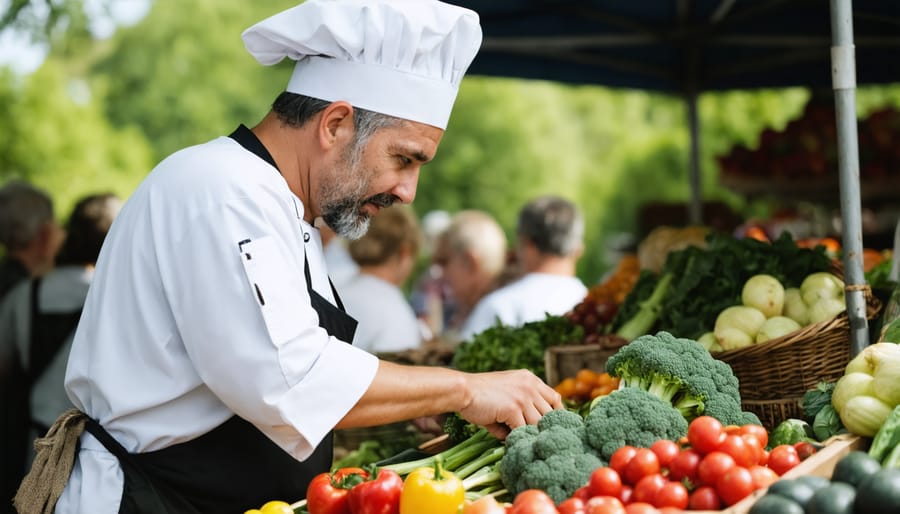
Marketing Your Seasonal Menu
Effectively marketing your seasonal menu starts with engaging your local community and highlighting the connection to Alberta’s farmers. Create eye-catching table displays featuring the current season’s star ingredients, and train your staff to confidently discuss the origins of seasonal items – customers appreciate knowing their meal supports local agriculture.
Social media is a powerful tool for seasonal promotion. Share behind-the-scenes photos of your chef selecting produce at farmers’ markets or visiting local farms. Post vibrant images of your seasonal dishes, particularly during harvest times when local ingredients are at their peak. Consider creating a dedicated hashtag that celebrates your commitment to seasonal cooking and Alberta’s agricultural community.
Email marketing can keep regular customers informed about menu changes. Send previews of upcoming seasonal offerings and special events that showcase new menu items. Consider offering loyal customers first access to seasonal tasting menus or special farm-to-table dinners.
Partner with local farmers and producers for cross-promotional opportunities. Host special events where farmers can meet diners and share their stories. This not only promotes your seasonal menu but also strengthens community ties and supports sustainable agriculture.
Don’t forget traditional marketing channels – local food magazines, radio spots, and community boards can help reach customers who may not be active on social media. Consider seasonal specials during quieter periods to maintain steady traffic throughout menu transitions.
Implementing seasonal menus offers tremendous benefits for both restaurants and local agricultural communities. By embracing seasonal ingredients, establishments can reduce food costs, support Alberta farmers, and create exciting dining experiences that keep customers coming back. The environmental impact is significant, with reduced transportation emissions and enhanced biodiversity through diverse crop rotation. Making the switch doesn’t have to be overwhelming – start small by featuring one or two seasonal specialties, then gradually expand your seasonal offerings. Connect with local farmers’ markets, join agricultural networks, and engage your staff in the process. The time is right to embrace seasonal menu planning and become part of Alberta’s sustainable food future. Your customers will appreciate the fresh, local flavours, while our farming communities will thrive with your support. Take that first step today – your restaurant, your customers, and our environment will thank you.



